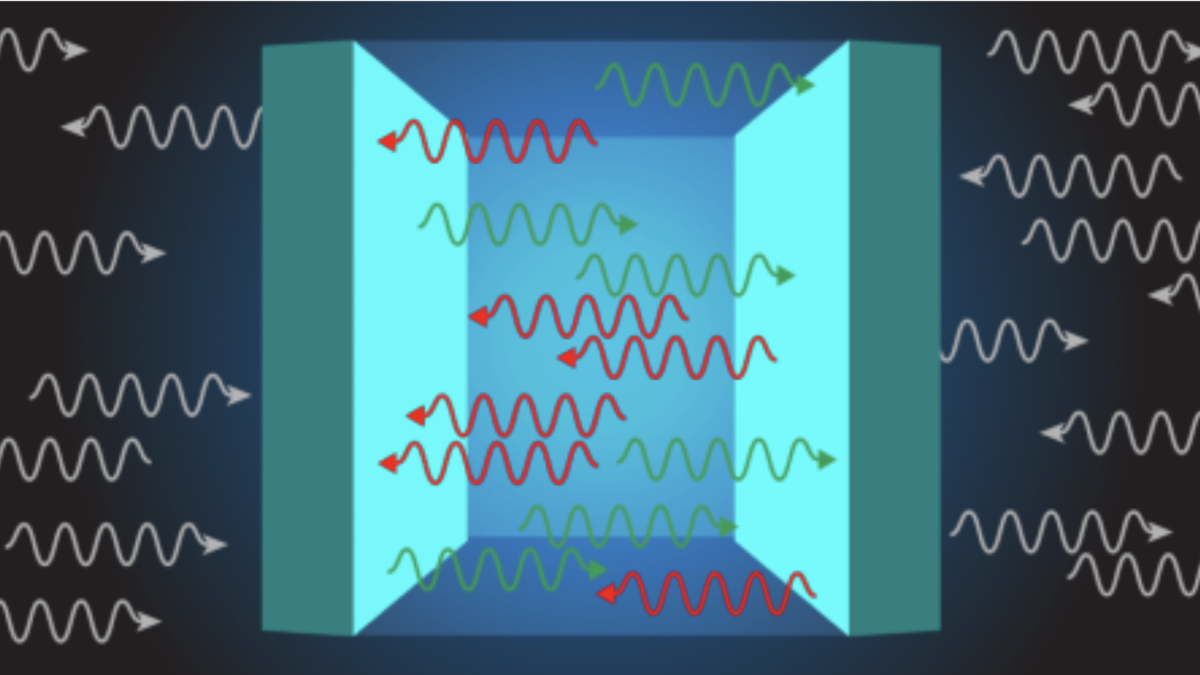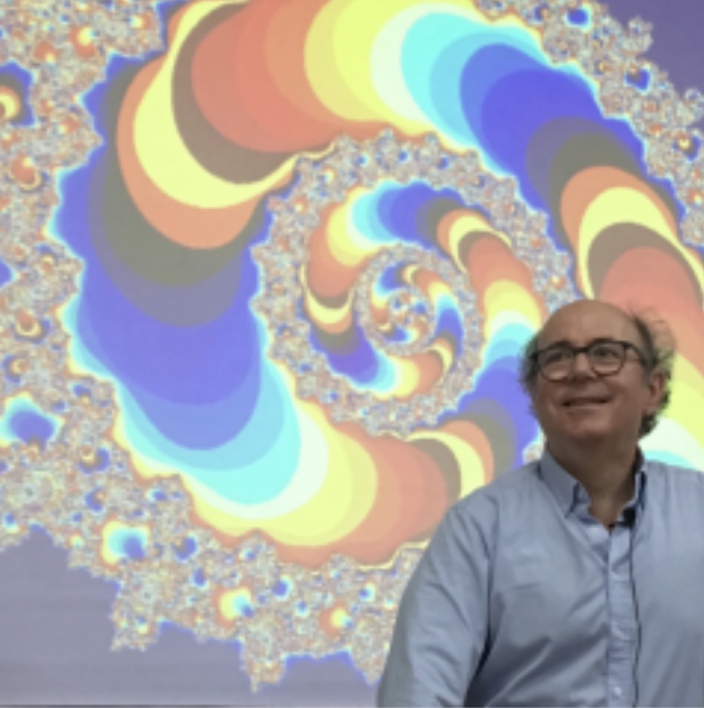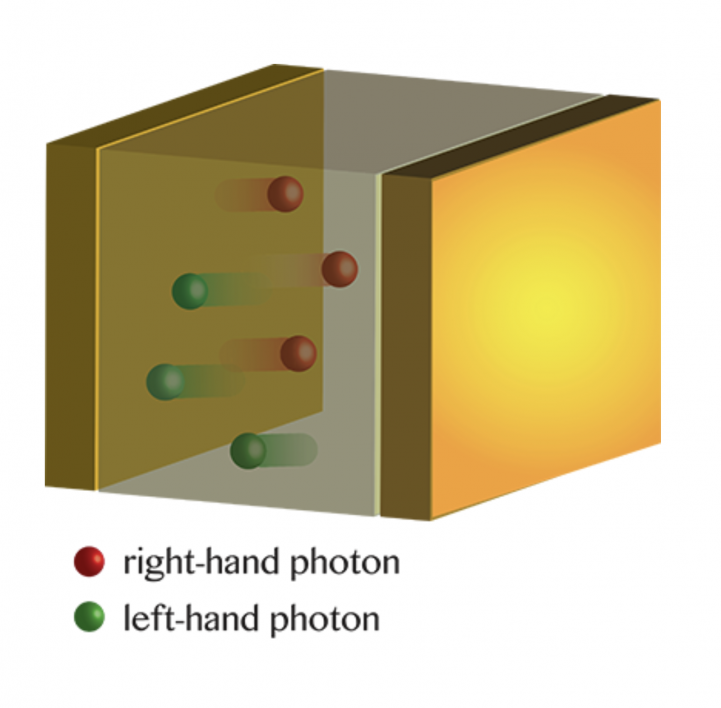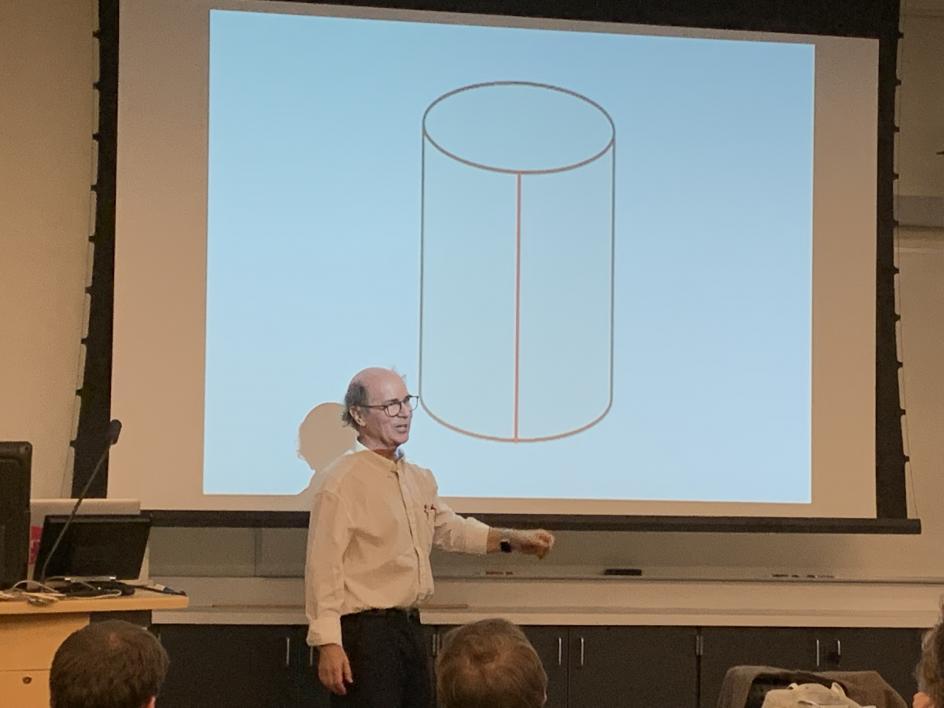The force is with us, always? Tuning quantum vacuum forces from attractive to repulsive

ASU physicist Frank Wilczek has shown for the first time that the Casimir force can be reversed and made repulsive, tunable or enhanced, depending on the properties of the material inserted between the plates. Image courtesy of Alan Stonebraker, American Physical Society
The Force is strong not only in "Star Wars" lore but also as a fundamental property in physics. For example, scientists can put two uncharged metal plates close together in a vacuum, and “voila!” — they will attract each other like Luke Skywalker and his trusted lightsaber.
In 1948, Dutch theoretical physicist Hendrik Casimir first predicted an attractive force responsible for this effect — later dubbed the Casimir effect. A half-century later, in 1996, the Casimir force was experimentally measured for the first time by Steve Lamoreaux at Los Alamos National Laboratory.
But just like the light and dark side of the Force in "Star Wars," scientists have wondered, can there be an equal-yet-opposite kind of Casimir force?
“Between two like materials, this force always corresponds to an attractive Casimir force, regardless of the mediating materials,” said Arizona State University physicist Frank Wilczek. “Yet in principle the Casimir force can be repulsive.”
Wilczek explains that generating a repulsive Casimir force has gained a great deal of interest in practical applications like the semiconductor industry, as chips have grown tinier and tinier with atomic-scale features.
“In recent years, people have devoted substantial efforts to realizing repulsive Casimir forces, especially with a view toward applications to nanodevices and colloids, which can contain nearby parts that one wants to keep separate.”
Now, Wilczek, along with colleague Qing-Dong Jiang of Stockholm University, have shown for the first time that the Casimir force can be reversed and made repulsive, tunable or enhanced, depending on the properties of the material inserted between the plates.
“We find that the Casimir force can, as a function of distance, oscillate between attractive and repulsive, and that it can be tuned by application of an external magnetic field,” he said.
Wilczek, a professor of physics at ASU, also holds faculty appointments at Massachusetts Institute of Technology and Stockholm University.
Far from being a science about nothing, the “material” within the empty space of vacuums between the two metal plates, because of quantum effects, are actually rivers teeming with an invisible force — electromagnetic waves that contain untapped energy. During the Casimir effect, as the plates are moved together, some of the waves in the vacuum are gradually squeezed out, giving more energy to their surroundings, and causing the attractive force.
The vacuum is filled with quantum fluctuations of the electromagnetic field — virtual photons that pop in and out of existence — that are assumed to behave in the same way. To make the plates repulsive and tunable, Wilczek and Jiang inserted a material between the plates that breaks this behavior. This chiralChiral comes from the Greek word meaning hand. material causes two types of photons that differ like your left and right hand, or in this case, right- and left-circular polarized photons. The material causes the photons to have different velocities that can each transfer a different amount of momentum to the plates.
Wilczek and Jiang calculated the Casimir force between two plates for two types of intervening chiral materials and at different temperatures. They found that the force could be adjusted by changing the distance between the plates or changing the strength of an applied magnetic field. They found that making these adjustments could yield a repulsive Casimir force more than three times as strong as the attractive force for the same setup in a vacuum.
“The key to realizing repulsive Casimir forces between similar objects is to insert an intermediate chiral material between them,” said Wilczek. “The chiral Casimir force has several distinctive features: It can be oscillatory, its magnitude can be large, and it can vary in response to external magnetic fields.”
Their hope is that these results will provide physicists and engineers interested in semiconductors and nanodevices with a new way to explore the behaviors and properties of different materials at the quantum level.
“Through the connection of this force to independently measurable material properties, one obtains a wealth of predicted phenomena which directly reflect macroscopic effects of quantum fluctuations.”
And perhaps, scientists can even draw a bit of innovation inspiration by tapping into their inner Darth Vader: “Don’t underestimate the force.”
More Science and technology

Turning up the light: Plants, semiconductors and fuel production
What can plants and semiconductors teach us about fuel production?ASU's Gary Moore hopes to find out.With the aim of learning how…

ASU technical innovation enables more reliable and less expensive electricity
Growing demand for electricity is pushing the energy sector to innovate faster and deploy more resources to keep the lights on…

What do a spacecraft, a skeleton and an asteroid have in common? This ASU professor
NASA’s Lucy spacecraft will probe an asteroid as it flys by it on Sunday — one with a connection to the mission name.The asteroid…




